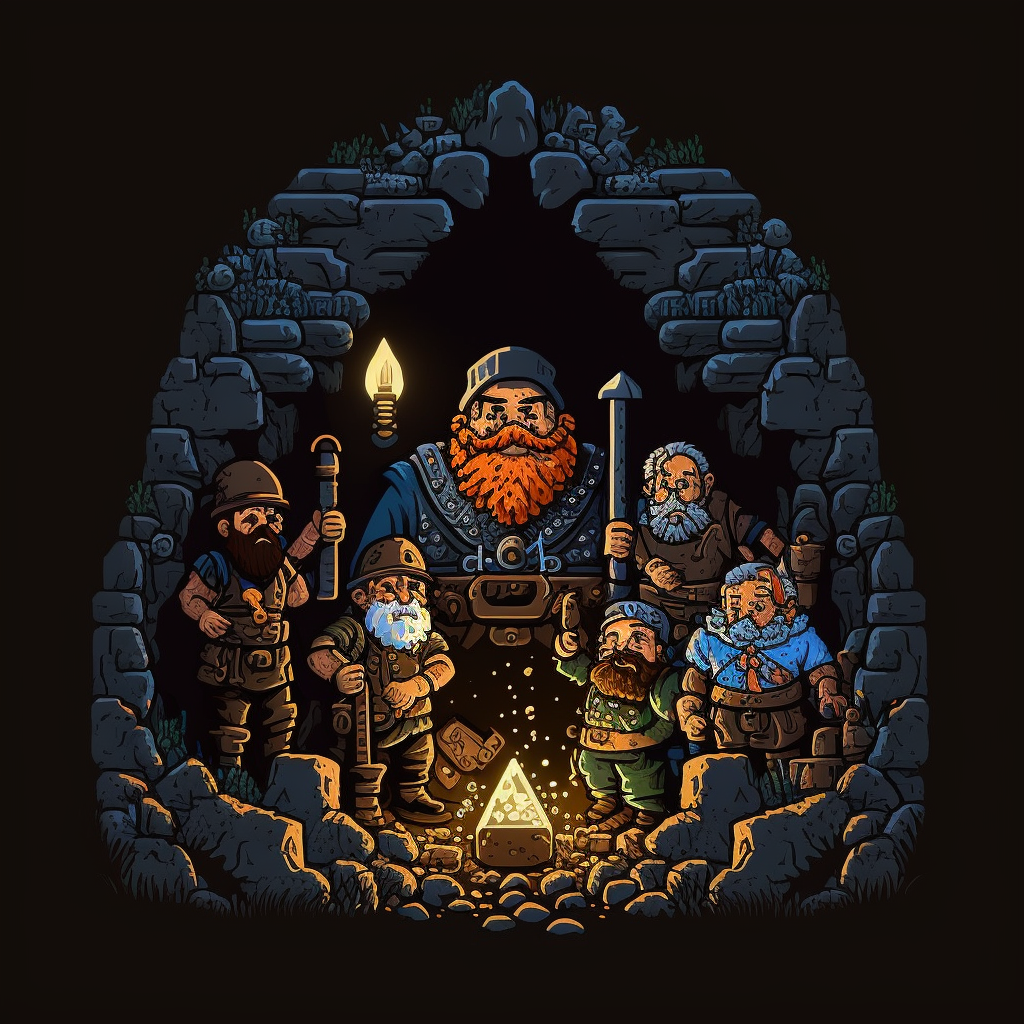-
Gaming
Anyone playing Elden Ring on Steam Deck??
Thursday May 8, 2025I have GeForce Now, two Macs, an Xbox and a Steam Deck. The two games I would play if I had a Gaming Computer: Elden Ring on Steam. Minecraft Bedrock on macOS or GFN. 😮💨 Does anyone know if Elden Ring Nightreign will be Crossplay? 😬
-
Gaming
Just set up a basic Silverfish XP farm in Minecraft. It would be easy, they said.
Monday May 5, 2025I spent way too long yesterday trying to figure out a basic silverfish XP farm from YouTube. I can’t seem to trap the stupidly helpful Allay. Where might one go to get help? 😖
I’m on bedrock. I have two allays via cheat mode. They have cobblestone equipped. I throw the cobblestone down the hole above the campfire, and they don’t go down the hole. They just pick up the cobblestone and give it back to me. (^-^)/
-
Gaming
Nintendo’s Palworld Lawsuit - Why Patented Game Mechanics Are a Dangerous Precedent
Tuesday January 28, 2025Game mechanics have always been the heart and soul of video games—from shooting aliens in classic arcades to the loot boxes of modern multiplayer titles.
But what happens when a big publisher decides to patent those core ideas? Welcome to the controversy swirling around Nintendo’s patent infringement lawsuit against Pocket Pair, the developer of Palworld.
In a nutshell, Nintendo claims Palworld infringes on patents that Nintendo filed after Pocket Pair had already showcased similar mechanics in both Palworld and an earlier game called Craftopia.
This legal battle raises unsettling questions about the future of game development, creativity, and fair competition in the industry.
How the Lawsuit Unfolded
Nintendo and The Pokémon Company are targeting Palworld for allegedly copying mechanics such as capturing creatures in a 3D environment by aiming and throwing an object—similar to what players experienced in Pokémon Legends: Arceus.
However, the suit seems contentious because:
- Timing: Nintendo’s patents were filed after Pocket Pair had already introduced the mechanics in Craftopia (back in 2020) and continued them in Palworld.
- Questionable Novelty: Prior art—existing examples of the same mechanic—dates to before Nintendo’s 2024 patent.
While Nintendo’s financial claim is relatively small (around $64,000), the implications could reverberate throughout the gaming industry.
The Dark Side of Patenting Game Mechanics
Stifling Creativity and Innovation
Video game genres thrive on iteration.
Imagine if the creators of Tetris had patented “falling blocks,” preventing other puzzle games from evolving.
When mechanics like “throwing objects to catch creatures” become off-limits, developers can’t freely experiment or build upon popular ideas.
Instead of pushing design boundaries, studios would be forced to tiptoe around legal pitfalls.
Blocking Indie Developers from Competing
Patent lawsuits aren’t cheap. Large corporations wielding legal muscle can easily intimidate indie teams even with modest budgets.
Even if the developer isn’t outright violating a patent, the fear of drawn-out litigation can stop a smaller studio from exploring new or similar ideas.
This creates a chilling effect and shrinks the diversity of games on the market.
Undermining Prior Art and Open Development
Craftopia, which predates Nintendo’s patent filings, already showcased the capture mechanic.
This raises the question: Should a patent be granted for something already existing in the public domain?
If big companies can skirt “prior art” by filing patents after a concept becomes popular, we risk a world where legal jockeying trumps genuine creative evolution.
Setting a Dangerous Legal Precedent
Nintendo’s lawsuit appears to be about more than monetary gains.
Securing a legal win—even with a minimal financial award—could establish a precedent for future “retroactive” enforcement of patents.
We could see a domino effect where large companies swiftly patent any emerging or existing game mechanic (like loot boxes, battle passes, or crafting systems) to wield as leverage against competitors.
Shifting Focus from Creativity to Corporate Control
The gaming community is built on collaboration, modding, and iterative improvements.
Corporate legal teams become gatekeepers when patents start walling off fundamental gameplay mechanics.
This focus on patent ownership over game mechanics risks stifling the spontaneous creative spark that makes gaming exciting and varied.
Counterargument: Do Patents Protect Innovation?
Proponents of game mechanics patents argue they protect developers’ R&D investments.
It’s one thing to guard specific code, unique artwork, or particular characters under copyright and trademark, but It’s another to claim ownership of abstract ideas or interactions.
Gameplay thrives on remixing and refining existing concepts, much like how the first-person shooter genre built upon the foundations of DOOM to give us everything from Halo to Call of Duty.
What’s at Stake for Gamers and Devs?
If Nintendo’s suit against Palworld succeeds, smaller studios could be deterred from experimenting with new or existing gameplay loops for fear of treading on newly patented territory.
That means fewer bold, creative indie projects that dare to compete with industry giants.
For gamers, that translates to a more homogenous market, with big publishers calling the shots on which core mechanics are permissible.
Where We Go From Here
-
Stricter Patent Reviews
Patent offices should thoroughly examine applications to ensure that “prior art” is respected. If a mechanic existed before a new patent’s filing date, that patent must be denied or invalidated. -
Speak Out and Withhold Support
Consider sending emails or letters to Nintendo and voicing your displeasure about their legal stance. If you disagree with these patent tactics, you could also choose not to purchase Nintendo’s upcoming console “Switch 2”. By withholding your financial support, you send a clear message that you don’t endorse aggressive patent enforcement against smaller developers. -
Consider Removing Your Game from Their Platform
If you’re a developer who has published a game on a Nintendo platform, consider pulling your title as an act of protest. Cite Nintendo’s lawsuit against Palworld as your reason for taking this stance—though, to be clear, your action is a form of protest, not the direct cause of Nintendo’s legal actions. This may seem drastic, but collective action from creators can make a strong statement. -
Support Dev-Friendly Companies
Look for publishers and platforms that embrace open collaboration and do not aggressively patent core gameplay mechanics. Encourage the industry to adopt business practices that foster free creative expression. We should champion companies that value innovation over litigation. -
Legal Reform and Industry Dialogue
Finally, push for policy changes that limit the scope of software patents. Engage in honest discussions—through social media, petitions, or at industry conferences—to build a consensus that ensures fundamental gameplay ideas remain open and free to iterate on.
By banding together as consumers and creators, we can challenge legal tactics that stifle creativity. If we speak with our wallets, voices, and actions, we have a better chance of preserving the spirit of open innovation that has driven the games industry for decades.
-
Welsh, Oli. “Nintendo and Pokémon Co. Sue Palworld for Patent Infringement.” Polygon, 19 Sept. 2024, https://www.polygon.com/news/453369/nintendo-pokemon-co-palworld-lawsuit.
-
Parrish, Ash. “Palworld Developer Has No Idea Why Nintendo’s Suing Over Its Pokémon-Like Game.” The Verge, 19 Sept. 2024, https://www.theverge.com/2024/9/19/24248957/pocketpair-pokemon-patent-infrigement-lawsuit.
-
Walker, Ian. “Palworld Update Changes Some Pokémon-Like Throwing Mechanics Following Nintendo Lawsuit.” Polygon, 29 Nov. 2024, https://www.polygon.com/news/493584/palworld-update-pokemon-nintendo-pokeball-lawsuit-patent.
-
Webster, Andrew. “Palworld’s New Island Will Be Its ‘Largest’ and ‘Harshest’.” The Verge, 28 Nov. 2024, https://www.theverge.com/2024/11/28/24308294/palworld-december-2024-update-new-island.
-
Yang, George. “Palworld Developer Launches New Game on Switch in Middle of Nintendo Lawsuit.” GameSpot, 9 Jan. 2025, https://www.gamespot.com/articles/palworld-developer-launches-new-game-on-switch-in-middle-of-nintendo-lawsuit/1100-6528719/.
-
GamerLaw. BIG Update to Pokémon vs. Palworld Lawsuit. YouTube, 15 Dec. 2024, [www.youtube.com/watch.
-
Gaming
My 50+ Greatest Video Games
Sunday December 8, 2024Here are 50+ games that have stuck with me over the years - a collection of my favorite titles that have left a lasting impression. These aren’t ranked in any particular order, just games that I’ve thoroughly enjoyed and spent countless hours playing.
- Super Mario World (SNES, 1990, Nintendo) - Classic platformer featuring Mario and Yoshi in the Dinosaur Land adventure
- World of Warcraft (PC, 2004, Blizzard Entertainment) - Massively multiplayer online RPG set in the world of Azeroth
- EverQuest (PC, 1999, Sony Online Entertainment) - Pioneering 3D MMORPG that helped define the genre
- Warcraft III (PC, 2002, Blizzard Entertainment) - Real-time strategy game featuring four unique races and hero units
- StarCraft (PC, 1998, Blizzard Entertainment) - Sci-fi RTS featuring three distinct alien races in a cosmic conflict
- StarCraft II (PC, 2010, Blizzard Entertainment) - Sequel to the iconic RTS expanding on the original’s story and gameplay
- The Legend of Zelda (NES, 1986, Nintendo) - Action-adventure game that pioneered many open-world gaming concepts
- Half-Life 2 (PC, 2004, Valve) - Revolutionary FPS featuring physics-based gameplay and immersive storytelling
- Vampire Survivors (PC, 2022, Poncle) - Roguelite survival game with auto-attacking and bullet-hell elements
- Chrono Trigger (SNES, 1995, Square) - Time-traveling JRPG considered one of the greatest games ever made
- Doom (PC, 1993, id Software) - Groundbreaking FPS that defined the genre for years to come
- Unreal (PC, 1998, GT Interactive) - First-person shooter showcasing the revolutionary Unreal Engine
- Quake (PC, 1996, id Software) - Technical breakthrough in 3D gaming and multiplayer FPS
- Sid Meier’s Civilization IV (PC, 2005, 2K Games) - Turn-based strategy game about building civilizations through history
- The Elder Scrolls V: Skyrim (PC/PS3/X360, 2011, Bethesda Softworks) - Open-world fantasy RPG set in the Nordic province of Skyrim
- Fallout 4 (PC/PS4/XOne, 2015, Bethesda Softworks) - Post-apocalyptic RPG set in the ruins of Boston
- Diablo II (PC, 2000, Blizzard Entertainment) - Action RPG that set the standard for the hack-and-slash genre
- Hollow Knight (PC, 2017, Team Cherry) - Atmospheric metroidvania with challenging combat and beautiful art
- Minecraft (PC, 2011, Mojang) - Sandbox survival crafting game with infinite possibilities
- Control (PC/PS4/XOne, 2019, 505 Games) - Supernatural action-adventure set in a shape-shifting building
- X-COM (PC, 1994, MicroProse) - Turn-based tactical game about defending Earth from aliens
- Might and Magic series (PC, 1986, New World Computing) - Classic RPG series featuring party-based dungeon crawling
- GoldenEye 007 (N64, 1997, Nintendo) - Revolutionary FPS that defined console multiplayer shooting
- Divinity: Original Sin 2 (PC, 2017, Larian Studios) - Deep tactical RPG with complex systems and multiplayer support
- Baldur’s Gate 3 (PC, 2023, Larian Studios) - D&D-based RPG with unprecedented level of choice and reactivity
- Elden Ring (PC/PS5/XSX, 2022, Bandai Namco) - Open-world action RPG featuring challenging combat
- Dark Souls II (PC/PS3/X360, 2014, Bandai Namco) - Action RPG known for its difficulty and intricate level design
- Overwatch (PC/PS4/XOne, 2016, Blizzard Entertainment) - Team-based hero shooter with diverse character roster
- Team Fortress 2 (PC, 2007, Valve) - Class-based multiplayer FPS with distinctive art style
- Borderlands 3 (PC/PS4/XOne, 2019, 2K Games) - Looter-shooter with irreverent humor and billions of guns
- Warframe (PC, 2013, Digital Extremes) - Free-to-play sci-fi action game with space ninjas
- Resident Evil 4 (GC, 2005, Capcom) - Revolutionary third-person survival horror action game
- Assassin’s Creed IV: Black Flag (PS3/X360, 2013, Ubisoft) - Open-world action game set in the Golden Age of Piracy
- Stardew Valley (PC, 2016, ConcernedApe) - Farming simulation RPG with rich social interactions
- RimWorld (PC, 2018, Ludeon Studios) - Sci-fi colony management simulation with emergent storytelling
- BioShock 2 (PC/PS3/X360, 2010, 2K Games) - Underwater FPS sequel exploring themes of family and collectivism
- Max Payne 2 (PC, 2003, Rockstar Games) - Noir action game featuring bullet-time shooting mechanics
- Death Stranding (PS4, 2019, Sony Interactive Entertainment) - Unique delivery action game with social connection themes
- Frostpunk (PC, 2018, 11 bit studios) - Society survival game in a frozen post-apocalyptic world
- Orcs Must Die! 2 (PC, 2012, Robot Entertainment) - Tower defense action game with trap-laying mechanics
- Deep Rock Galactic (PC, 2020, Coffee Stain Publishing) - Co-op mining FPS featuring space dwarves
- Heroes of Hammerwatch (PC, 2018, Crackshell) - Roguelite action RPG with pixel art graphics
- Smite (PC, 2014, Hi-Rez Studios) - Third-person MOBA featuring mythological deities
- Factorio (PC, 2020, Wube Software) - Complex factory building and automation simulation
- Left 4 Dead 2 (PC, 2009, Valve) - Cooperative zombie survival FPS with dynamic AI Director
- Bloodborne (PS4, 2015, Sony Interactive Entertainment) - Gothic action RPG featuring aggressive combat and Lovecraftian horror
- Final Fantasy VII (PS1, 1997, Square) - Landmark JRPG featuring epic story and innovative materia system
- Clash of Clans (iOS/Android, 2012, Supercell) - Strategic mobile base-building and raiding game
- Cyberpunk 2077 (PC/PS4/XOne, 2020, CD Projekt) - Open-world action RPG set in a dystopian future metropolis
- Risk of Rain 2 (PC, 2020, Gearbox Publishing) - 3D roguelike shooter with escalating difficulty and power progression
- Hades (PC, 2020, Supergiant Games) - Action roguelike based on Greek mythology with compelling narrative
- Halo 3 (X360, 2007, Microsoft Game Studios) - Epic conclusion to the original Halo trilogy with groundbreaking multiplayer
- The Elder Scrolls IV: Oblivion (PC/X360, 2006, Bethesda Softworks) - Open-world fantasy RPG set in the Imperial province of Cyrodiil
- The Legend of Zelda: A Link to the Past (SNES, 1991, Nintendo) - Beloved action-adventure featuring parallel Light and Dark Worlds
- Super Mario Bros. 2 (NES, 1988, Nintendo) - Unique Mario platformer based on Doki Doki Panic with character selection
- Torchlight II (PC, 2012, Runic Games) - Fast-paced action RPG with mod support and multiplayer features
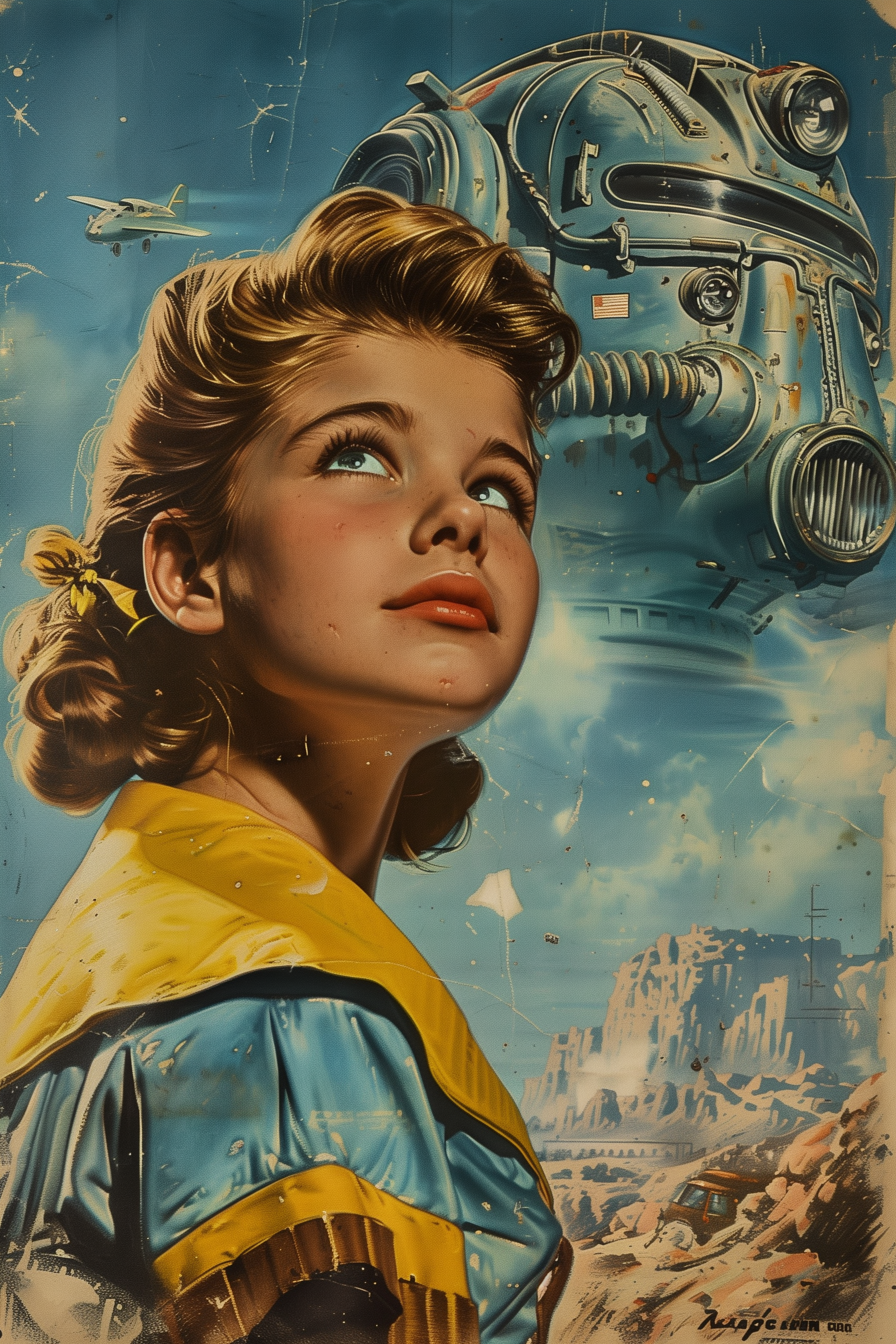
-
Gaming
Unveiling the Mystery: How to Discover the Heart of the Sea in Minecraft
Thursday March 14, 2024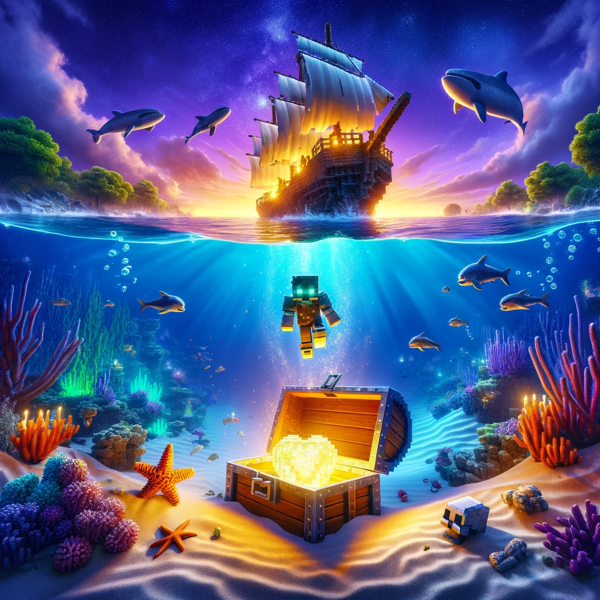
Minecraft's vast, expansive world is filled with countless treasures, but few are as coveted as the Heart of the Sea. This rare item is not just a trophy; it's a key component in crafting one of the most useful items for underwater exploration and construction - the Conduit. But where do you find this elusive Heart of the Sea, and what steps must you take to obtain it? Let's dive into the depths of Minecraft and uncover the secrets of acquiring this precious item.
The Journey Begins: Unearthing Buried Treasure
The quest for the Heart of the Sea starts with the search for buried treasure maps. These maps are the only clue to finding the hidden treasures that lie beneath the sand. But how do you find these maps? There are three main avenues:
- Small Underwater Ruins: With a 41.7% chance of housing a treasure map, these ruins are a good starting point.
- Large Underwater Ruins: Slightly better odds here, at 43.5%, but still not a guaranteed find.
- Shipwrecks: The most reliable source, offering a 100% chance of containing a buried treasure map. Shipwrecks can be found in oceans or on beaches, hiding the maps within their chests.
Navigating with a Buried Treasure Map
Once you've secured a map, the real adventure begins. A buried treasure map in Minecraft looks distinctly different from a regular map. It features orange and white lines, with land masses outlined in white and black.
The center of the map is marked with an "X," indicating the treasure's location, while a white dot represents your current position. As you move closer to the treasure, the dot grows, guiding you to your prize.
The Reward: Heart of the Sea
After following the map and reaching the "X," you'll likely need to dig, sometimes underwater, to uncover the buried treasure chest. Within it, alongside valuable resources like iron and gold ingots, lies the Heart of the Sea.
This item is the centerpiece in crafting a Conduit - an underwater beacon that grants enhanced abilities like improved vision, breathing, mining speed, and protection against hostile mobs. It's an indispensable tool for anyone looking to establish underwater bases or farms.
Crafting the Conduit: The Final Step
To craft a Conduit, you'll need eight Nautilus Shells in addition to the Heart of the Sea. The combination of these items creates a powerful beacon, opening a new realm of possibilities for underwater adventures and construction.
Your Next Adventure Awaits
This quest for the Heart of the Sea? It's just the beginning. With Nautilus Shells and your newfound treasure, you're about to craft something that's not just game-changing—it's game-defining.
So dive in, chase those shipwrecks, and let the ocean's mysteries unfold. Whether you're here for the builds, the thrills, or just the chill of discovering hidden treasures, the Heart of the Sea is your key to an epic underwater saga.
Don't miss out on our other guides, especially on Nautilus Shells and Conduits, to maximize your Minecraft adventures. Ready to make waves? Let's get this underwater party started!
-
Gaming
Christmas Card for or FROM the GenZ Gamer In Your Life
Tuesday December 5, 2023Yo Fam,
Merry Litmas! 🎄💥 This holiday season is gonna be straight fire, no cap. Just like my epic gaming sessions, I'm wishing you unlimited loot and zero lag in all your festive quests.
Remember, don't just camp under the Christmas tree, go full beast mode on those presents! And keep your holiday spirits higher than my Fortnite kill count. Let's make this Christmas more legendary than a rare drop in [insert popular game].
Stay frosty and may your WiFi be as strong as your coffee. Let's catch up for a gaming sesh over the hols – maybe I'll even let you win for once. 😉
Peace, love, and GGs,
[Your Name]
P.S. Santa better not nerf my gifts this year. 🎮🎁

-
Gaming
List of Streamers Doing Lets Play of Baldur's Gate 3
Saturday August 5, 2023Linking to Playlists where possible.
- MFPallytime - Baldur’s Gate 3 - The Dark Urge FULL GAME Let’s Play / Walkthrough / Playthrough - YouTube
- FightinCowboy - Baldur’s Gate 3 Let’s Play - YouTube
- CohhCarnage - BALDUR’S GATE III Race And Class Breakdown (Sponsored by Larian Studios) - YouTube
- MadMorph - A cozy playthrough of Baldur’s Gate 3 (Full Game Walkthrough) - YouTube
- ChristopherOdd - The DARK URGE Consumes US - Baldur’s Gate 3 CO-OP FULL RELEASE Gameplay Part 1(Dragonborn Druid) - YouTube
- Quill18 - The Diplomatic Druid - Let’s Play Baldur’s Gate 3 - Ep 1 - YouTube
- HeyAmarii - Baldur’s Gate 3 Let’s Play Tactician Pt. 1 Parasites - YouTube
- Rurikhan - Baldur’s Gate 3: Going in Blind, No Metagaming, All Roleplay | Dwarven Bard | Part 1 - YouTube
- Telegram me Updates: LoganLand
🔥 Love my work? ☕ Show your support and fuel my creativity by buying me a coffee on Ko-Fi! 💫 Ko-fi.com - Your Ko-fi #SupportCreators
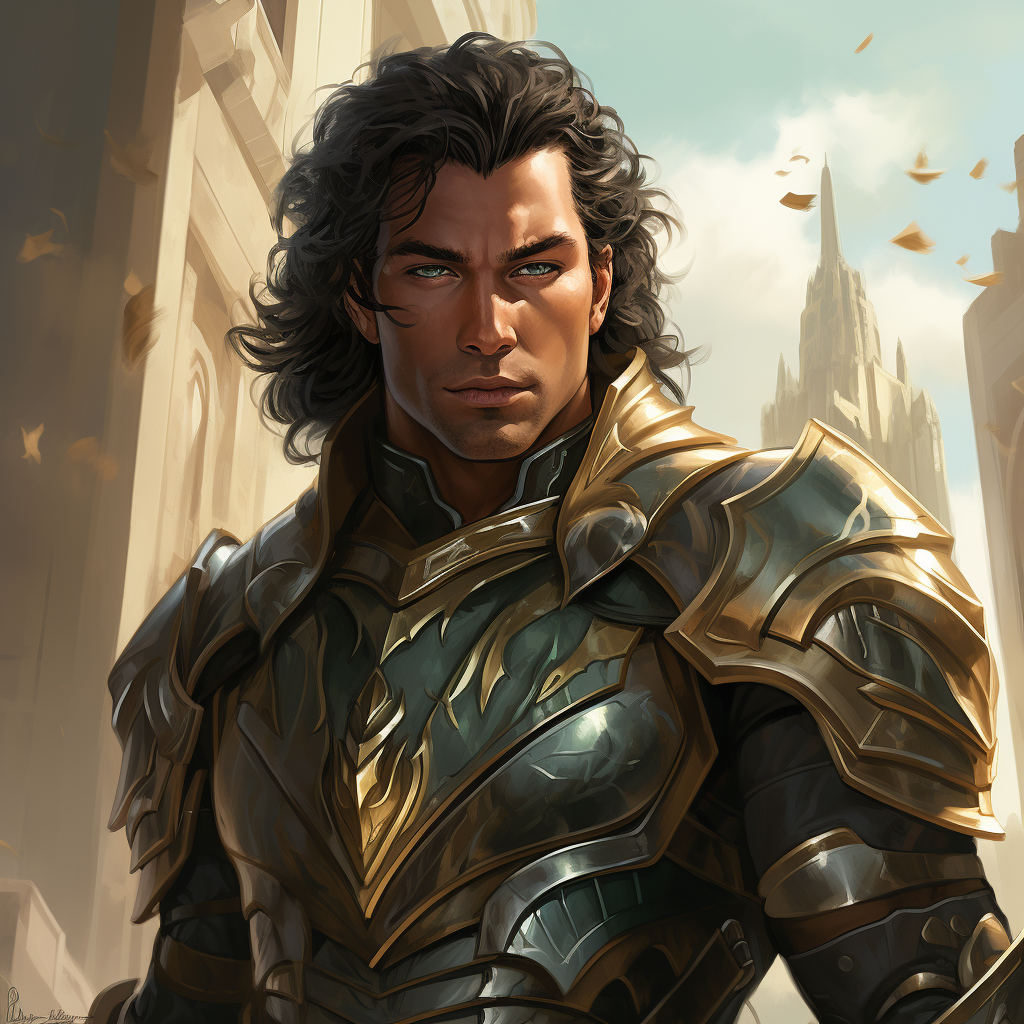
-
Gaming
A Deep Dive into Minecraft Bedrock Adventures
Sunday July 16, 2023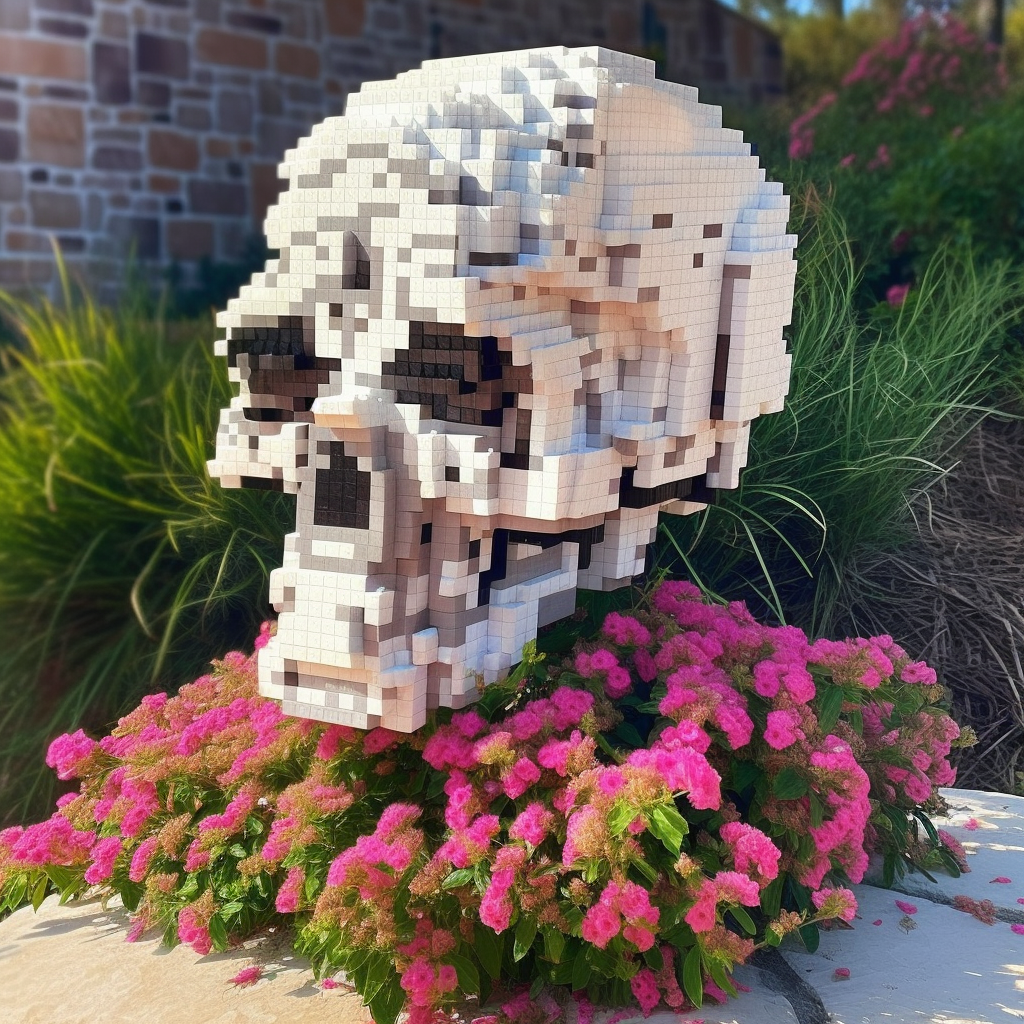
In my recent experiences with Minecraft Bedrock, I've stumbled upon some fascinating aspects worth sharing. Minecraft Bedrock is the Java edition rewritten in C++ for those unfamiliar. It's compatible with more devices and offers a more significant draw distance than its Java counterpart.
Though beneficial in these aspects, Minecraft Bedrock must catch up regarding mod availability. Minecraft Java edition features various free mods accessible across multiple websites. Unfortunately, free mods for Minecraft Bedrock aren't as abundant, leading most users to source their mods from the in-game marketplace run by Mojang or Microsoft.
Downloading a mod from the marketplace is straightforward, enabling you to create a solo game on your device. This game is then open for others to join and play, an effortless process. However, things get complicated when you desire a modded Bedrock game that remains accessible to friends even when you're offline – a situation that calls for a server.
The primary issue here is that marketplace mods for Minecraft Bedrock primarily operate on servers owned by Microsoft or Mojang. There's scant information on how to work with these mods, with a few enlightening YouTube videos. Once downloaded from the marketplace using Windows 10, you find these mods on your C drive in a strangely named folder. The regular files for Minecraft mods are present, but opening them reveals they're encrypted.
This isn't about stealing mods, but the freedom to play with marketplace mods on Minecraft Bedrock servers that aren't owned by Microsoft or Mojang would be highly appreciated. To that end, I've posted an article on Medium discussing hosting your Minecraft Bedrock server using Docker.
Using a similar setup for a few months now, it works great. Hosting your Docker server locally on any home network computer allows friends to connect to your IP address and play together. The caveat is the lack of mods, but Minecraft remains an enjoyable experience, even unmodded.
As I journeyed further, I realized the desire to occasionally enjoy Minecraft with mods. Thus began the quest to create a modded Bedrock server, which turned out to be daunting.
In one of my attempts, I downloaded a unicorn ranch mashup template for my unicorn-enthusiast niece. We opted for a Microsoft server costing $4 a month that accommodates three people, which was perfect for our needs. However, the unicorn ranch mashup world tends to malfunction with new Minecraft versions.
Minecraft's mod workings remain a mystery to me. One would expect them to be backward or future-compatible. It's frustrating when minor version updates, from 1.20 to 1.20.10, cause massive disruptions. It could be clearer why minor changes in a point release would disrupt mods available on the marketplace.
Our unicorn ranch mashup server is unplayable on Xbox, though I can still enjoy it on the iPad. It would be beneficial if Microsoft could test these mods, considering they're available on their platform. Meanwhile, I'm considering seeking advice from Minecraft's discord server to find solutions.
Having played Minecraft regularly since version 1.18, my journey is still fresh. I hope the server issues resolve themselves so I can return to the Xbox version. The problem persists despite trying multiple fixes, downloading backups, playing with server settings, and ensuring all texture packs and behavioral mods are enabled and updated, the problem persists.
Minecraft is a game I love, but dealing with mods on Bedrock can be challenging. I can be patient and hope for the game or the mod to receive an update fixing these issues. Whether the problem lies with Minecraft on Xbox or the mod itself needs to be clarified.
-
Gaming
Thursday February 9, 2023Ok, Dwarf Fortress is cool, I love building and managing my own fortress and Dwarves. The intricate systems and endless possibilities make each playthrough a new challenge. I’ve become attached to my Dwarves, and the procedurally generated worlds provide infinite replayability.
